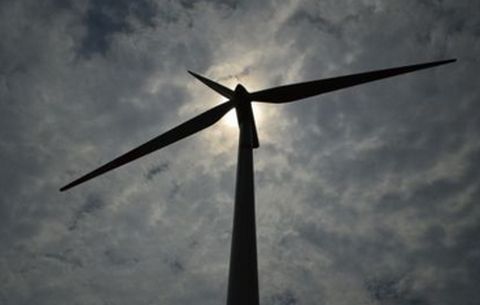By: Kristoffer Tigue, Agya K. Aning, Judy Fahys, Katie Surma – Inside Climate News
January 24, 2021
Catherine Flowers remembers the moment she realized the environmental justice movement had entered a new era of acceptance and recognition.
It came last spring, the environmental justice activist said, when then-candidate Joe Biden snatched the Democratic nomination from Sen. Bernie Sanders and shortly afterward announced the creation of a joint task force to shape climate change policy. “He talked about environmental justice,” said Flowers, recalling her sense of amazement.
“He also mentioned ‘cancer alley.’ I’ve never heard a president mention ‘cancer alley’ before,” she said, referring to a highly industrialized stretch of the Mississippi River in Louisiana, where a mostly Black population has some of the highest cancer rates in the country.
Flowers, now a senior fellow of environmental justice and civic engagement at the Center for Earth Ethics at the Union Theological Seminary, soon found herself on Biden’s task force alongside former Secretary of State John Kerry and former Environmental Protection Agency Administrator Gina McCarthy.
She recommended incorporating social justice considerations into every aspect of the new administration’s environmental agenda—and felt ecstatic, hours after Biden’s inauguration on Wednesday, to see that her recommendations were being taken seriously.
The new president, she said, wasn’t offering “empty campaign promises.”
She and other prominent environmental justice advocates said two executive orders he signed Wednesday night placed unprecedented focus on racial equity and environmental justice, setting the stage to aggressively target the disproportionate impacts of pollution and climate change on environmental justice communities.
“He’s rebuilding trust with vulnerable communities, frontline communities, and with the federal family,” said Mustafa Ali, the vice president of environmental justice, climate, and community revitalization at the National Wildlife Federation. “These orders serve as a north star for the direction the federal government will be moving in.”
One of the Biden orders called for a “whole-of-government” approach to embedding equity across federal policymaking, which would encompass everything from how data is collected to whether agencies allocate resources fairly.
The other calls for the review and potential reversal of over 100 Trump administration actions weakening and rolling back environmental laws and regulations—“critical first steps,” the document says, “to address the climate crisis, create good union jobs and advance environmental justice.”
Beginning with Trump’s decision not to upgrade air pollution standards, the rollbacks sought by Biden speak to what environmental justice activists called basic air, water and climate regulations that, if left in place, would amount to a death sentence for communities of color.
“The experience of the Covid pandemic, we think, has finally, maybe, broken through for people to understand what we’ve been saying for three decades, that there is a relationship between racial discrimination, the preponderance of environmental threats in communities of color, and adverse health outcomes in those communities, as well as shortened life expectancy,” said Vernice Miller-Travis, executive vice president of the Metropolitan Group, a think tank focused on sustainability and social justice.
The Trump administration decided against strengthening air pollution standards despite a growing body of research showing that air pollution kills as many as 52,100 Americans prematurely each year and disproportionately affects low-income communities and communities of color.
The Biden administration is also reviewing the Trump rules that stripped the conservation protections from millions of acres of federal land in Alaska and the Southwest that Indigenous tribes revere and depend upon for their livelihood.
With another series of executive orders regarding climate change expected this week, Flowers said she hopes the auspicious beginning foreshadows a permanent seat at the table for EJ activists.
“We’re not even 24 hours into the administration and all this is already happening?” she said after Biden took the oath of office. “It gives me hope.”
Rolling Back the Trump Legacy on Climate and the Environment
The executive orders Biden signed on inauguration day acknowledged what environmental justice advocates had been saying throughout the presidential campaign about the disproportionate impact Trump’s environment and climate legacy has had on communities of color. The coronavirus pandemic, which also disproportionately affected those communities, only added urgency.
Most harmful, the activists said, was the decision last year by Trump’s Environmental Protection Agency to reject the recommendations of the agency’s own scientists to strengthen the national air quality standard for fine soot pollution, also known as PM2.5.
A Harvard study last year found a link between Covid-19 death rates and communities with a historically higher exposure to PM2.5—microscopic particles less than 2.5 micrometers in diameter—which also tend to be in higher concentrations in low-income communities of color.
This connection between PM2.5, which comes from burning fossil fuels, and a raging pandemic only underscores the critical need for Biden’s call to strengthen this standard, Miller-Travis said.
Biden’s rollback order also targeted Trump’s move to weaken the scope of the National Environmental Policy Act, and particularly a provision that would prevent federal regulators from considering the indirect and cumulative effects of polluting projects before permitting them. Under Trump’s rule, regulators won’t be urged to consider if a community already faces high levels of pollution as a factor in permitting future industry infrastructure, such as landfills or power plants.
Trump’s rule change received harsh criticism from environmental justice advocates, who already found NEPA lacking.”
“The limited protection that folks had was removed, but really what EJ communities really need is a cumulative impacts analysis,” said Sacoby Wilson, an associate professor at the University of Maryland’s School of Public Health.
This means expanding NEPA to consider additional factors, such as institutional racism and a community’s access to health care.
Coupled with reviews of other Trump rollbacks that would likely result in higher levels of air pollution, the Biden administration appears to be taking an aggressive and holistic approach to addressing the disproportionate effects of pollution on environmental justice communities, the activists said. And they are calling on Biden to move on those reviews as quickly as possible.
“I think every rollback could be connected to an EJ issue,” Wilson said. “When you permit facilities to pollute, to poison communities, that’s another form of state-sanctioned violence.”
But the timeline to counteract the numerous rollbacks vary widely. Some could be undone with a congressional vote, while others could take the entirety of Biden’s first term, environmental and legal experts said.
“The Trump rollbacks meant to reduce red tape for industry created more yellow tape for frontline and fenceline communities,” Wilson said in an email. “Any delays in reversing Trump’s reign of environmental terror will continue the devastation and environmental degradation that these communities have faced over the past 4 years.”
Laying a New Foundation
Biden’s opening agenda, as well as promises he made on the campaign trail, also points to broader structural changes that could have lasting impacts on addressing environmental justice.
His executive order for racial equity across the whole government lays the foundation for a slew of possible environmental justice-focused actions, including requiring all federal agencies to look at whether underserved communities face systematic barriers to opportunity under existing policies and programs.
“There’s a lot of high minded language in the orders, but it’s the foundation for having long lasting change. It’s a bold move for day one,” said Jillian Blanchard, director of the climate change program at Lawyers for Good Government.
The order is just a first step for environmental justice advocates who want to see a number of other policy changes that embed racial and environmental equity across the federal government.
Ali, who headed the EPA’s environmental justice efforts during the Obama administration, has been advocating for Biden to appoint senior environmental justice advisors within each executive agency and in the White House. He said it would be a good step if Biden fulfills his promise to elevate the EPA’s Environmental Justice Advisory Council and the Environmental Justice Interagency Council as White House entities.
“Biden has said EJ and climate are top priorities, so to not have a top advisor helping to guide him and share relevant information and experiences leaves a gap and doesn’t get at the large set of challenges and opportunities that we have in front of us,” he said.
Under Biden’s proposal, those entities would report to Brenda Mallory, whom he has nominated as chair of the White House Council on Environmental Quality. If confirmed by the Senate, Mallory, who is now director of regulatory policy for the Southern Environmental Law Center, would be the first African American to hold the position.
Advocates are also watching for action on Biden’s promise to go after polluters. According to his environmental justice plan, Trump’s EPA referred the fewest number of criminal anti-pollution cases for prosecution in 30 years.
Biden said he would create a new Environmental and Climate Justice Division in the Department of Justice to work with the existing Environment and Natural Resources Division and the Civil Rights Division to go after polluters, including an effort to address “legacy pollution that includes real remedies to make communities safe, healthy, and whole.”
“The fact that we did not have that type of division in the past, it really undercut the ability for frontline [and] fenceline communities to seek action,” Wilson said. “It’s also going to push the civil rights divisions of all the federal family to do more…”
Biden also wants to target the EPA’s External Civil Rights Compliance Office. His plan would overhaul that office to empower, under Title VI of the 1964 Civil Rights Act, communities “that experience the worst impacts of climate change and fenceline communities that are located adjacent to pollution sources.”
Environmental justice communities have used Title VI to address racial discrimination to fight some permitting and siting decisions of facilities that release harmful pollutants. But the pathway to justice under Title VI was narrowed by the U.S. Supreme Court in 2001, which forced communities to bring most claims within the EPA, instead of in the courts. The EPA has failed to promptly and adequately resolve those complaints, according to one report and court rulings.
Biden said he wants to work with Congress on legislation that would provide a pathway for communities to bring “disparate impact” Title VI lawsuits into courts, which would give communities another avenue for redress, potentially allowing more cases to be heard.
Caroline Farrell, executive director of the Center on Race, Poverty & the Environment, has worked with low-income communities to file a number of Title VI complaints with the EPA. She said the EPA has never prioritized Title VI complaints, has been slow in taking action on them, and when pressed to take action, has summarily dismissed them.
“Enough is enough. We need to start making this mean something in a way that people really feel like, okay, yeah, my rights are being protected,” she said.
The best way for Biden to make lasting change will be to work with Congress on legislation, something that will be difficult given the Democrats’ smallest of majorities in the Senate. Infrastructure is one area where both parties could find common ground.
Environmental justice advocates said they would like to see that legislation focus on minimizing environmental harms to disadvantaged communities while providing opportunities, like contracting and subcontracting work to businesses of color that haven’t always been on equal footing when it comes to federal resources.
“This is a transformational moment, let’s make sure that it is a transformational moment for those who have often been unseen, unheard, or intentionally left out of the process,” Ali said.
As the administration moves forward, activists said they’ll be keeping an eye on the administration to ensure that environmental justice communities continue to be at the table through the policymaking process.
“The administration should keep checking in with people in the EJ community that are living this every day to make sure they’re going in the right direction,” said Flowers. “There should be constant check ins.”
Environmental justice community members, and not just Biden’s cabinet officials, should also retain seats at the table as climate and environmental policy evolves, she said, adding: “That’s what we’re going to be looking for over the next 4 years.”
The Looming Battle Over Bears Ears
Less than a week into the new administration, a fight over those seats is already taking shape in Utah, where the Trump administration’s downsizing of the Bears Ears National Monument was targeted in Biden’s order for regulatory review.
A looming battle over mining rights will pit Indigenous communities in the Four Corners Region of Utah, Colorado, Arizona and New Mexico against white Republicans who see the creation of the monument as government overreach.
A coalition of southwestern tribes—the Navajo, the Ute Indian Tribe, the Ute Mountain Utes, the Zuni and the Hopi—originally brought the monument idea to the Obama administration. And Obama established the all-Indigenous Bears Ears Commission to help manage the new monument in its 2016 proclamation.

But within a year, the Trump administration carved 1 million acres from Bears Ears at the request of Utah’s GOP-majority political leadership. The commission was supplanted with an appointed advisory panel that was hostile to the monument and that put monument opponents in the two slots it left for tribal members.
During much of this time, while the public debate was focused on mining, the county containing Bears Ears was facing court orders—again—to comply with the Voting Rights Act to address why white Republicans ruled San Juan County when most of the county’s population is Native American. The commission went on record opposing the monument until the 2018 elections made a pair of Navajo Democrats the governing majority. They repealed the anti-Bears Ears declarations.
Indigenous roots in the region are thousands of years deep, and archaeologists see it as an invaluable window into human history, rich with clues about how people have adapted to climate change. But Woody Lee, executive director of the nonprofit Utah Dine Bikeyah, said the remarkable redrock landscape isn’t only important because of artifacts. It continues to be a hub of traditional activities.
“That is our chapel,” he said. “That is our home; that’s where we pray; that’s where we gather our food; that’s where we gather our firewood for heating; and that’s where we still educate our young for traditional hunting [and where young women find plants] to make our wedding baskets and ceremonial baskets.”
Lee, whose group advocated for the monument, applauded the Biden administration’s first-day order to review Trump executive actions on Bears Ears. He’s eager for Bears Ears supporters to take part in the dialog after the Trump administration shut them out.
But other political leaders in Utah had stepped up to voice their opposition to Biden’s order before Inauguration day ended.
“A review in name only with predetermined results, which ultimately leads to a unilateral executive order enlarging the monuments’ boundaries, will not solve the root of the problem and will only deepen divisions in this country,” the state’s all-Republican members of Congress, its new governor, the attorney general and leaders of the state House and Senate said in a news release.
Their statement urged Biden to include state and local leaders in working on a consensus product, “including a permanent solution approved by Congress.”
Lee’s response: “We are Utahns,” he said, “and we’d like to be allowed to sit at these tables on any type of issues that involve our lands within Utah.”
In the end, Bears Ears could prove to be a sign of the challenges ahead for Biden’s environmental justice agenda.





